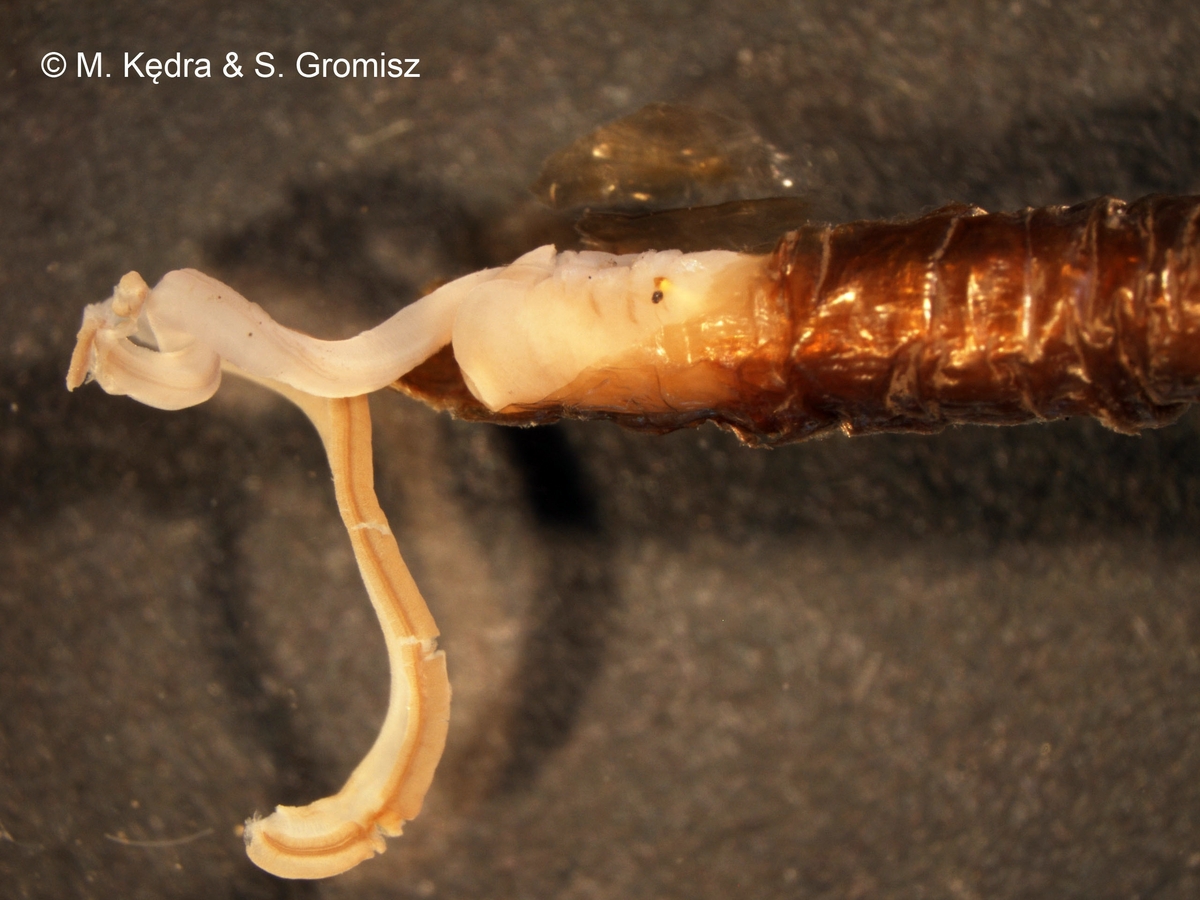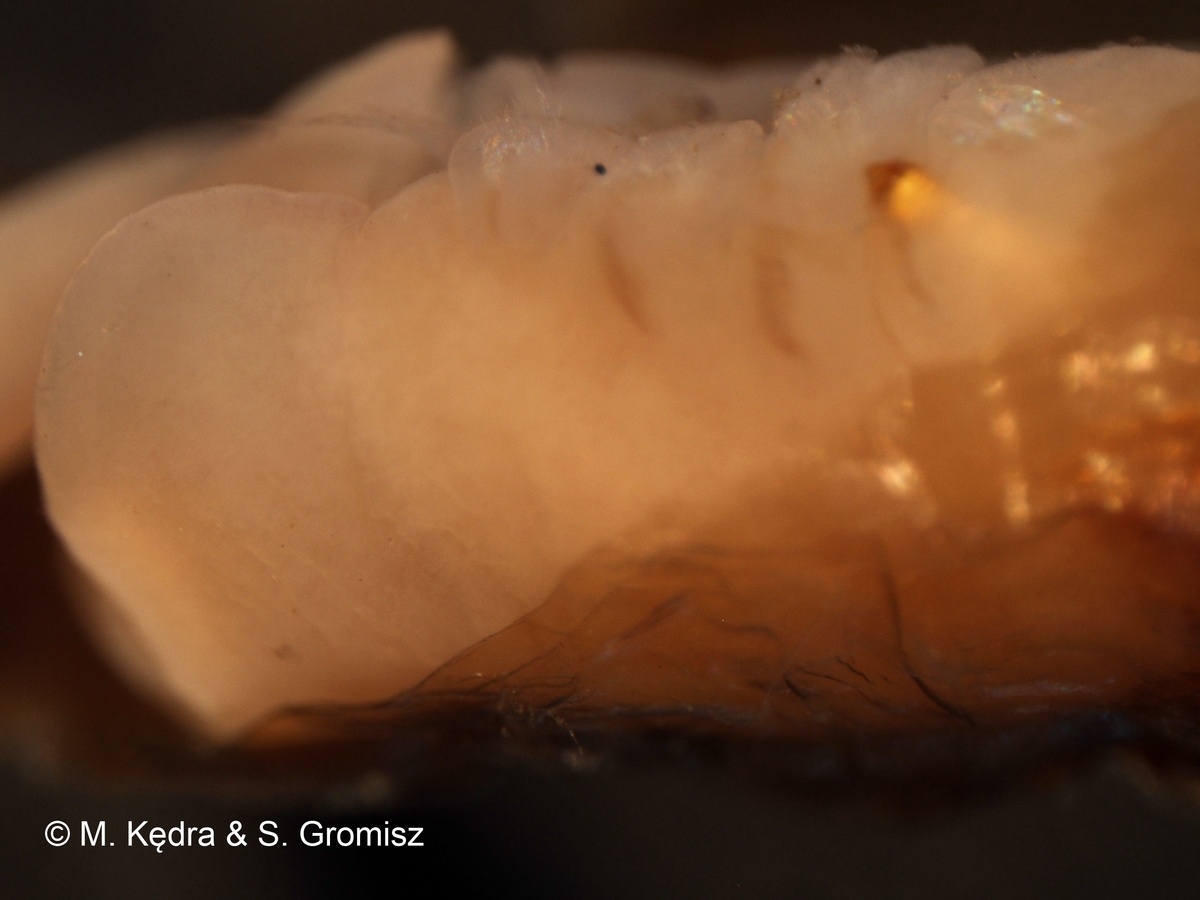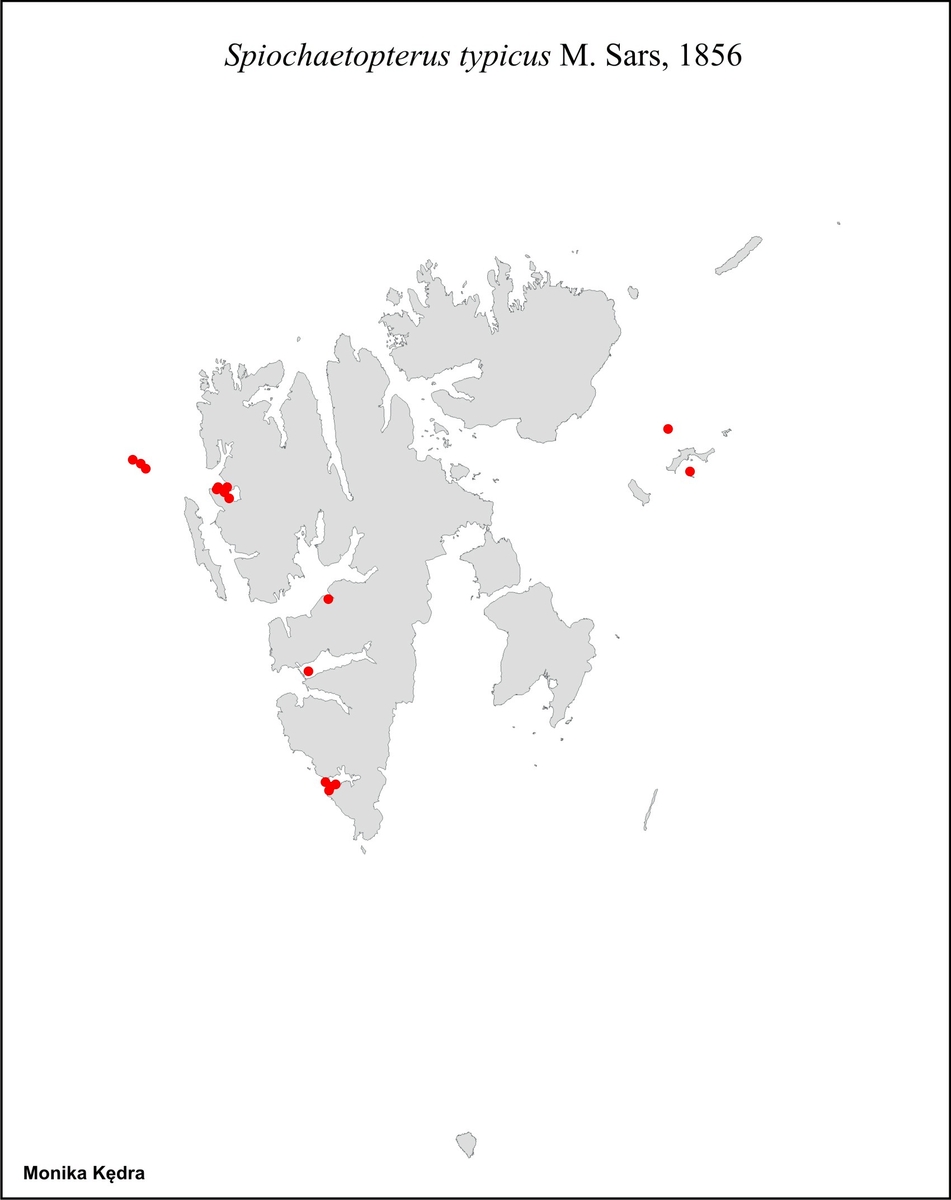Spiochaetopterus typicus M. Sars, 1856

|

|

|
No synonyms.
Distinguishing characteristics
Prostomium is ventrally and laterally enclosed by the U-shaped peristomium.
4th notopodium with big, golden-brown hooks.
Species description
Body long, thin and fragile. Prostomium broadly rounded, elliptical, longer than broad, neither eyes nor antennae. Palps very long, often spiraled. Prostomium ventrally and laterally enclosed by the U-shaped peristomium. Anterior part of body with 9-10 segments, with triangular to oval notopodia. 4th notopodium with big, distally broadened, obliquely concave golden-brown hooks. Mid-body region with 2-10 elongate segments with bi- or trilobed notopodia and bilobed neuropodia. Noto- and neuropodia connected by a lamella in the mid-body. Posterior body region of many short segments. Pygidium small, without appendages. Tube - cylindrical, straight, transparent, with many rings, yellowish to brownish, up to 300 mm long.
Size
Up to 130 mm for over 150 segments.
Color
In alcohol yellowish to white.
Habitat
From 2 to 4000 m deep. Tube obliquely in muddy sediments. Species tolerant to excess organic matter enrichment. These species may occur under normal conditions, but their populations are stimulated by organic enrichment (slight unbalance situations).
Mobility
Sedentary.
Feeding
Surface deposit feeder.
Suspension feeder.
Life cycle
Pelagic larvae with a very long planktonic life lasting several months.
Distribution
Arctic, Northern North Sea to Öresund, North Atlantic to Mediterranean, North Pacific, South Africa.

